Every journey begins with a single step. But for someone learning to walk again—especially after limb loss or injury—that step means far more than just moving forward. It means reclaiming freedom. It means rediscovering balance. It means finding a new way to live life on your own terms.
At Robobionics, we’ve witnessed incredible stories of courage. Stories that begin with uncertainty but end with smiles, strength, and self-belief. The path to walking again isn’t just about physical movement. It’s about emotional recovery. It’s about learning to trust your body again and believe in what’s possible.
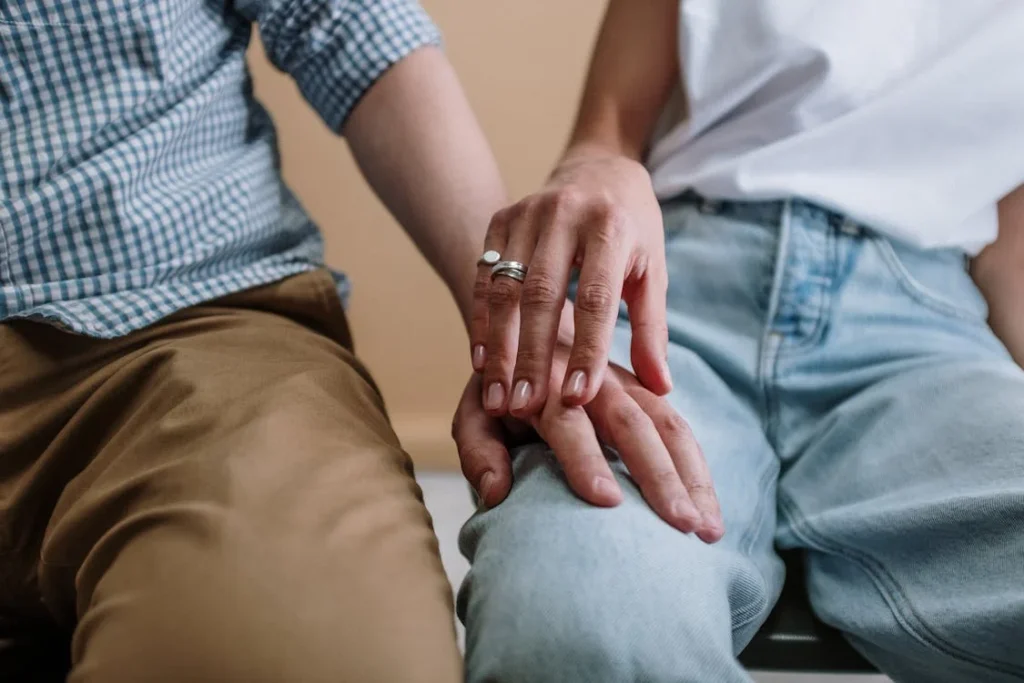
The Emotional Start: Taking the First Step After Limb Loss
Facing the Unknown
When someone loses a limb—whether due to an accident, illness, or a medical condition—it feels like life hits a sudden pause. There’s fear, confusion, and a flood of questions. Will I be able to walk again? How long will it take? Will I ever feel normal?
This is the emotional weight that often greets individuals before they even begin gait training. It’s not just about learning to walk with a prosthetic leg. It’s about accepting a new version of oneself. At Robobionics, we’ve met people from all walks of life—students, farmers, business owners—who arrived at our center unsure and quiet. Many hadn’t smiled in weeks. Their families were worried, watching silently, hoping for a miracle. But what they needed most was not just physical therapy. They needed someone to believe in them. They needed a reason to believe in themselves.
Learning to Trust Again
One of the most inspiring parts of gait training is the transformation that begins in the mind. Before we start working on posture or balance, we work on trust. Trust in the process. Trust in the prosthetic limb. And above all, trust in oneself.
Take the story of Ramesh, a 42-year-old man from Maharashtra who lost his leg in a construction site accident. The day he first wore his prosthetic, he stood in front of the parallel bars, holding them tightly, breathing heavily, his eyes filled with doubt. Our gait training expert simply stood beside him and said, “Don’t worry. I’m here. You just focus on taking one step.”
That one step was shaky. His knee buckled a little. But he didn’t fall. He took another step. And then another. Within a week, Ramesh started coming early to training. Within a month, he was walking short distances without assistance. And within three months, he was walking his daughter to school.
It’s Not a Straight Path
There’s a common misconception that once someone gets a prosthetic limb, they’re ready to run. The truth is, gait training is a process that takes time, patience, and lots of repetition. It’s full of good days and hard days. Some mornings, our patients come in smiling. Other days, they sit in silence, frustrated that progress feels slow.
But this is normal. And it’s okay.
We’ve learned that each small improvement counts. The first time someone balances on their prosthetic without wobbling. The first time they climb a step. The first time they walk across the room without support. Each of these moments builds confidence, brick by brick.
One of our youngest patients, Anaya, was just 9 years old when she began gait training. She had lost her leg to cancer. Her parents were gentle and protective, afraid she’d get hurt again. But Anaya was strong. She had dreams of becoming a dancer. With steady progress and endless courage, she began walking again. Six months later, she took part in her school’s dance competition. She didn’t come first, but she danced her heart out. And when she finished, the entire auditorium gave her a standing ovation.
Family Support: A Hidden Strength
Gait training may focus on the individual, but we never overlook the family. We always say—recovery doesn’t happen alone. The encouragement from loved ones plays a huge role in healing.
We remember Meena, a 65-year-old retired teacher, who came to us after a road accident. Her son took a month off work just to stay with her during training. He cheered for her after every session, clapped even when she took just two steps. And it made all the difference. Meena said later, “I didn’t want to disappoint him. So I kept trying. And that kept me going.”
When families become active partners in the journey, the progress feels shared. We’ve seen siblings guiding practice sessions at home. Spouses adjusting furniture to make movement easier. Children encouraging their parents to show off their new skills. Gait training becomes more than therapy—it becomes a celebration of teamwork.
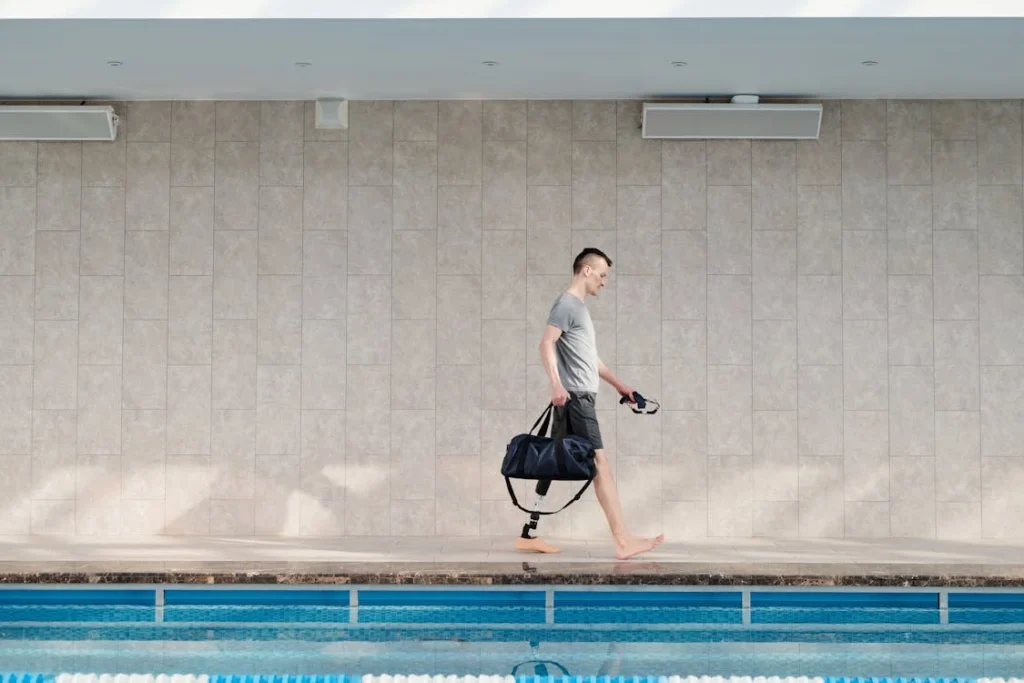
Building a New Walking Pattern: The Science Behind the Stride
Understanding Gait Mechanics
Walking seems like the most natural thing in the world—until you have to relearn it. When someone loses a limb, their body’s balance, rhythm, and posture all change. Even after they receive a prosthetic, their body may not move the way it used to. This is where gait training steps in.
At Robobionics, we take a step-by-step approach to help the body relearn how to walk naturally. The goal isn’t just to walk. It’s to walk comfortably, safely, and with confidence. Every part of the process matters—the angle at which the heel hits the ground, how the knees bend, how the hips rotate, even how the arms swing.
Our team works closely with patients to understand their unique movements. No two people walk the same way, and prosthetics have to be adjusted to fit those subtle details. Some people lean forward too much at first, while others avoid putting full weight on the prosthetic. With guided practice and small corrections, the new gait begins to feel natural.
The Role of Muscle Memory
One important part of gait training is building muscle memory. Our muscles remember patterns. Before limb loss, the body automatically knew how to take a step, shift weight, and stay balanced. But after a traumatic event or surgery, the muscles can forget. The brain has to send new signals. And the muscles need to learn again.
This learning process takes time. It’s like teaching someone how to ride a bicycle all over again. At first, there’s a lot of wobbling and overthinking. But eventually, it becomes second nature. This is why regular training sessions are so important. The more someone practices walking with their prosthetic, the more confident their muscles become.
We had a patient named Imran who had lost his leg in a bike accident. He was an active person before the accident—he loved hiking and traveling. After receiving his prosthesis, he struggled with posture. He kept leaning too far to the left. At first, it was frustrating. But instead of giving up, he kept practicing. Slowly, his body adapted. Today, Imran walks confidently, and recently completed a weekend trek with his friends. His muscles learned. His body remembered.
Overcoming Fear of Falling
One of the biggest emotional challenges during gait training is the fear of falling. It’s very common. Many people are afraid of putting full weight on their prosthetic. Others take very small steps, unsure if the limb will support them. This fear can slow down progress if not addressed early.
That’s why our first few sessions are always under close supervision. We use parallel bars, handrails, mirrors, and supportive harnesses to create a safe environment. The goal is to remove the fear and build trust—trust in the equipment, trust in the prosthetic, and trust in oneself.
We once worked with a lady named Sheila who had not walked in over two years. After her amputation, she relied entirely on a wheelchair. She was afraid of standing. During her first training session, we simply asked her to stand upright between the bars. Her legs shook. Her hands gripped the rails tightly. But we stood beside her and said, “You’re safe. We’ve got you.” It took time, but once Sheila realized she wasn’t going to fall, her body relaxed. That small moment turned everything around.
Regaining Rhythm and Natural Movement
One part of walking that’s often overlooked is rhythm. Walking has a beat to it—a left-right pattern that becomes second nature. But after limb loss, that rhythm gets disrupted. People tend to move stiffly, or overcompensate with their non-amputated limb. This uneven pattern can cause pain in the hips, knees, or back if not corrected.
Gait training brings the rhythm back. Our therapists use metronomes, music, and even walking tracks to help patients find a natural stride. One of our more joyful stories involves Rajesh, a school music teacher. He loved teaching songs to kids, but after his leg amputation, he stopped working. He told us, “Music has a beat, and I lost mine.” During his gait training, we used simple songs and clapping patterns to help him find his step again. Slowly, Rajesh began to move in sync. By the end of his training, he walked into our clinic with a speaker in hand, humming his favorite tune.
There’s something powerful about regaining not just the ability to walk—but the natural flow of movement. It’s a return to freedom. A return to ease.
Real-Life Terrain Challenges
While walking in a clinic or rehabilitation center is one thing, real-life terrain is a different challenge. Streets have potholes. Markets are crowded. Homes have uneven flooring. That’s why our gait training doesn’t end at the clinic door.
We gradually introduce outdoor sessions—starting with garden paths, ramps, stairs, and uneven grounds. Our patients learn how to adjust their steps, how to recover balance when surfaces shift, and how to read their surroundings for safety.
We remember Dinesh, a postman who had delivered mail on foot for over 20 years. After losing his leg, he was determined to return to work. But his biggest concern was navigating narrow village lanes and muddy roads. We tailored his gait training to mimic the exact conditions he faced—gravel paths, grassy fields, even rainy surfaces. Step by step, he grew confident. Three months later, he was back in uniform, with his mailbag slung across his shoulder, walking proudly through his route.

Rebuilding Confidence Through Every Step
Celebrating Small Victories
Recovery isn’t measured in kilometers. It’s measured in moments. The first time a patient walks without holding onto something. The first day they leave the house alone. The first evening stroll with their family. These moments may seem small to others, but to someone who has struggled to take even a single step, they are enormous.
We always make it a point to celebrate these small victories at Robobionics. Whether it’s a patient walking across the room or standing up from a chair without help, we stop to acknowledge the achievement. This doesn’t just motivate the individual—it reminds them that progress is happening, even if it feels slow.
Ritika, a young woman who lost her leg in a train accident, struggled deeply with motivation. She had been a college athlete, full of energy and dreams. After the accident, she withdrew. But on the day she completed her first full walk across the room during gait training, we played her favorite song. Her parents clapped. Her therapist gave her a high five. She smiled for the first time in weeks. That smile was a turning point. The next day, she walked twice the distance. And the week after, she started jogging slowly under supervision.
These small celebrations create positive memories linked to movement. They change the story patients tell themselves—from “I can’t” to “I just did.”
The Role of Motivation and Mental Strength
No matter how advanced a prosthetic limb is, it’s the mind that pushes progress forward. We’ve seen patients with excellent devices struggle because they didn’t believe in themselves. And we’ve seen people with the most basic limbs make incredible progress simply because they refused to give up.
Mental strength plays a huge role in gait training. There are days when progress feels invisible. Days when every step feels heavier than the last. On these days, motivation becomes the lifeline. We often ask patients to set personal goals. These goals don’t have to be big. Sometimes, it’s just the wish to walk to the kitchen without help. Sometimes, it’s about being able to take part in a family function standing tall.
One of our most unforgettable patients was Suresh, a grandfather in his late 70s who lost his leg due to complications from diabetes. His goal was simple: to be able to attend his granddaughter’s wedding on his feet. He told us, “I want to give her a hug standing, not sitting.” That became the driving force behind every training session. And on the wedding day, Suresh walked up to her, dressed in a fine sherwani, with tears in his eyes and joy in his steps.
It’s not about the size of the goal. It’s about the reason behind it. That reason keeps people going when things get hard.
Professional Support and Human Touch
While motivation and family support are crucial, professional guidance is what shapes recovery into real results. Our gait training team includes physiotherapists, prosthetists, rehabilitation experts, and sometimes even counselors. Every professional brings not just skill, but compassion.
Gait training isn’t just physical. Many patients come to us carrying emotional trauma—shock from an accident, shame from public stares, sadness from lost independence. This is why our therapists focus on building a bond with each patient. They talk, listen, and understand. They don’t just correct posture—they encourage. They don’t just track steps—they notice emotions.
Priya, a physiotherapist at our Pune center, once said, “Sometimes, all a person needs is someone who says, ‘You’re doing better than you think.’” That belief—when it comes from someone who knows the journey—can lift spirits and push limits.
In one memorable case, we worked with Arvind, a soldier who lost his leg in a border explosion. He came in tough and silent, used to pain but not prepared for the slow pace of recovery. For weeks, he spoke very little. But his therapist, Ravi, showed up every day with quiet encouragement. They barely talked. But the respect was mutual. Step by step, Arvind improved. On his final day, he saluted Ravi and said, “You made me stand again. Thank you.” It was a short sentence, but it meant everything.
From Recovery to Independence
The true goal of gait training isn’t just walking. It’s independence. It’s about being able to live without constant help. To go to the market. To take the bus. To work. To socialize. It’s about reclaiming daily life.
Many of our patients go on to lead fully independent lives. Some return to their jobs. Others explore new hobbies. A few even become advocates, sharing their stories to inspire others.
We remember Tara, a homemaker who lost her leg due to a serious infection. She was soft-spoken, and for a while, she doubted whether she could manage her home again. But with time, she not only learned to walk—she started using her story to help others in her community. Today, she volunteers at a support group for amputees, sharing practical tips and emotional support. She often tells new patients, “I once thought I was finished. Now I walk into rooms and give hope.”
This is the ripple effect of gait training. One person’s success becomes someone else’s inspiration. One confident step leads to many more.
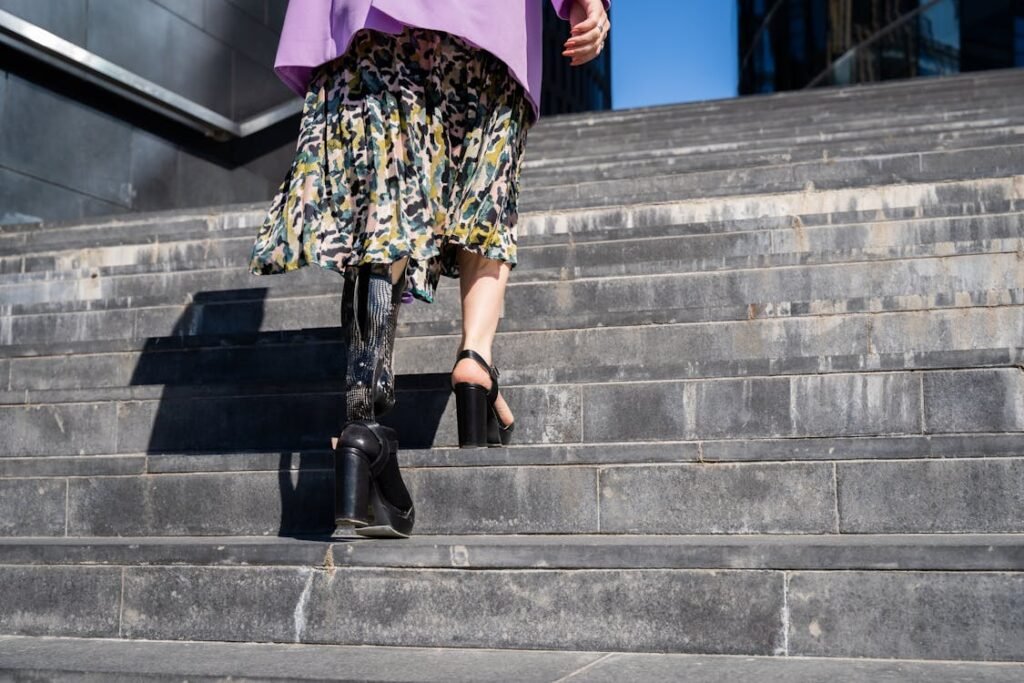
Returning to the World: Life After Gait Training
Adapting to Daily Routines
When gait training ends, a new chapter begins. Patients go back to their homes, their communities, and their everyday lives. This return can feel overwhelming at first. Simple tasks like climbing stairs, taking a shower, or standing at the kitchen counter can feel different now. But with every movement comes learning, and with learning comes confidence.
We always remind our patients that it’s okay to take time. Adapting isn’t a race—it’s a journey. Most people experience small bumps in the road. They may walk a little too much one day and feel pain the next. Or they might struggle with unfamiliar places that don’t have ramps or handrails. This is natural. And it’s part of the process.
One of our patients, Vikram, a young IT professional, returned to work a month after completing gait training. At first, he worried about walking into the office. He didn’t want to be stared at. But when he did, he was surprised. His colleagues cheered for him. They helped make small changes to his workspace. By the second week, Vikram was back in his flow—coding, walking to meetings, and enjoying his coffee breaks. The difference? He had faced his fear and realized the world was ready to welcome him back.
Staying Active and Building Strength
Even after formal training ends, we encourage our patients to stay active. Walking regularly, doing home exercises, and occasionally checking in with physiotherapists keeps the body strong and the gait natural. Strength building doesn’t need fancy equipment. A short daily walk, a few balance exercises, and stretches are enough to maintain progress.
We had one gentleman, Harish, who built a simple walking circuit around his backyard. Every morning, he would walk five rounds and time himself. It became his daily habit. Over six months, he went from walking ten minutes a day to almost an hour. He didn’t do it for fitness alone. He did it because it made him feel in control.
Activity also helps with balance and endurance. Climbing stairs, getting on buses, and moving through busy places all become easier when the body is used to movement. It also helps the mind. When the body moves, the spirit lifts. It’s easier to stay positive when every step feels smoother than the last.
Facing Society and Breaking Stigma
One of the most powerful changes we see after successful gait training is how individuals face society. At first, many patients worry about how others will see them. Will people stare at the prosthetic? Will they ask uncomfortable questions? Will they treat me differently?
These concerns are real. But something changes once confidence kicks in. When someone walks with strength, others notice the strength—not the limb. When someone smiles and engages fully, the conversation becomes about their presence—not their prosthetic.
We often tell our patients, “You teach people how to treat you.” And it’s true. The way you walk into a room, the way you stand, speak, and carry yourself—it changes how the world sees you.
Neha, a school teacher, shared her experience with us. After gait training, she returned to her classroom. Her students were quiet at first, unsure of how to react. So she addressed it head-on. She explained her journey in simple words, answered their questions, and then said, “Now let’s get back to learning.” The next day, her students brought handmade welcome cards. Neha told us, “They didn’t see a teacher with a prosthetic. They just saw their teacher.”
This ability to redefine yourself is a huge part of post-recovery life. It opens doors—not just for the individual, but for everyone who watches and learns from them.
Encouraging Others to Begin Their Journey
Perhaps the most touching part of working at Robobionics is seeing how our former patients become mentors for new ones. They visit the clinic, speak to those just starting out, and share their own struggles. This peer encouragement is powerful. It’s one thing to hear from a doctor. It’s another to hear from someone who’s lived it.
Ravi, a former patient who now runs a small tailoring business, often tells newcomers, “I couldn’t walk across my shop once. Now I stand for hours, cutting cloth and stitching.” His voice has the weight of experience. His words carry hope.
We’ve seen how one shared story can light up someone else’s eyes. How a short conversation can turn fear into action. And how progress multiplies when people support each other.
In fact, we recently started informal support circles—small meetups where people talk, walk, and even share meals. These groups don’t just offer guidance. They create bonds. And from those bonds, courage grows.
The Bigger Picture: Changing Lives, Changing Mindsets
Gait training is more than rehabilitation. It’s a doorway to freedom. It transforms not just the person who walks again, but their family, friends, and even their community. Each success story is proof that with the right support, nothing is impossible.
At Robobionics, we see it every day. We see people arriving in silence, unsure of what lies ahead. And we see those same people walk out stronger, prouder, and more alive than ever.
Every step matters. Every story is worth telling. And every journey—no matter how difficult—is a reminder that confidence isn’t found all at once. It’s built, one step at a time.
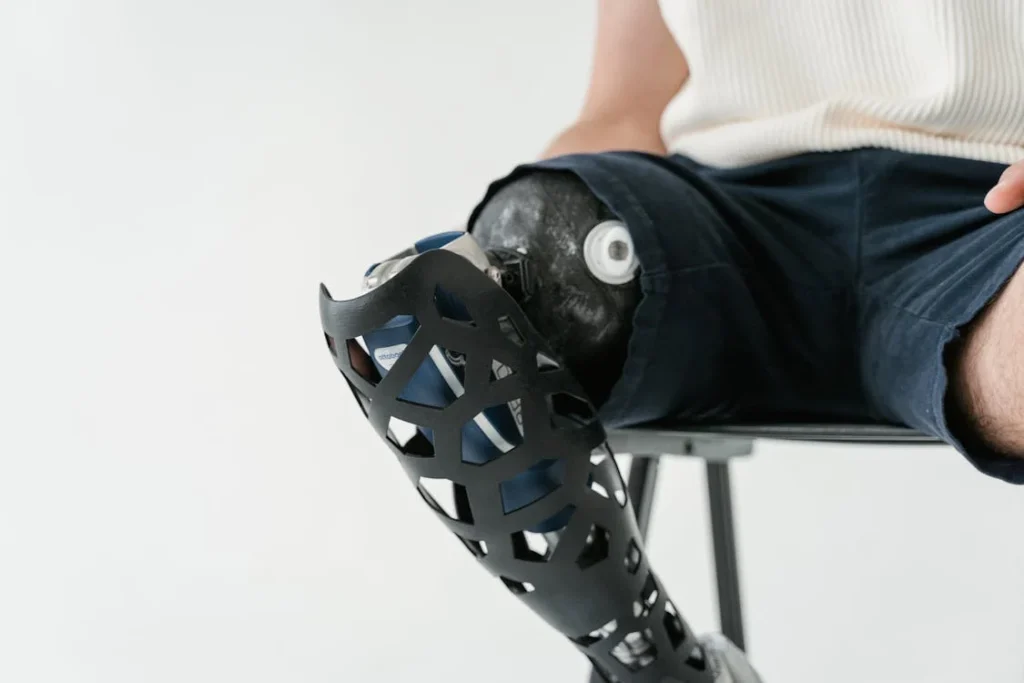
A New Chapter Begins: Life Beyond Limitation
Empowerment Through Purpose
One of the most beautiful transformations we witness in our patients is the rediscovery of purpose. Gait training does more than help people walk again—it often gives them a fresh reason to wake up with energy, to chase goals they once shelved, and to take back control of their story.
People who once thought their life had shrunk down to hospital rooms and pain clinics begin to realize they still have so much to offer the world. Their potential didn’t end with their limb loss. It simply took a new direction.
We remember Sneha, a young woman who was training to become a nurse when she lost her leg in a bus accident. She put her dreams on hold for over a year. Her days revolved around treatment and recovery. But something changed during gait training. With each step, she started visualizing herself back in uniform, caring for others just like she had once been cared for. She told us, “If I can walk again, I can stand by a patient’s side again.” That conviction carried her forward. Today, she works in a city hospital, and every shift she walks confidently down the corridor, she proves to herself and others that her purpose was never lost.
Purpose acts as fuel. When someone finds it—whether it’s a career, a family role, or a personal dream—they begin to live with drive. And that drive makes recovery even more powerful.
Redefining Identity After Recovery
A common challenge patients face—especially after limb loss—is redefining their identity. Many people associate who they are with their physical ability. Athletes, workers, performers, and parents often worry: “Am I still the same person?”
The answer is yes—but also more.
Through the process of gait training, people learn that their identity is not tied to how they walk or how they look. It’s tied to how they live, how they rise after setbacks, and how they adapt with grace.
Ajay, once a delivery driver in Delhi, lost his leg in a highway crash. His first question wasn’t about walking again—it was “Who will hire me now?” We helped him with his physical recovery, but we also helped him see new opportunities. He started learning basic computer skills during his rehabilitation. Today, he works in a logistics office, managing deliveries instead of making them. “I never imagined I’d be behind a desk,” he said with a laugh. “But now I get to help others do what I once did.”
Ajay’s story is a reminder that we’re all more than our jobs, more than our limbs, and more than our past. Gait training opens the door to this deeper understanding, giving people the chance to rebuild themselves with pride.
The Ripple Effect on Families and Communities
The recovery of one person often brings healing to many. Families that once lived in fear begin to smile again. Children feel safe seeing their parents stand strong. Communities see resilience in action and slowly begin to shift their views on disability.
When one person rises, many rise with them.
We’ve worked with mothers who wanted to hold their babies while standing again. Fathers who wanted to walk their daughters down the aisle. Teenagers who simply wanted to join their friends for a walk to the shop. These moments aren’t just personal wins—they are collective victories.
One man named Baldev, from a small village in Punjab, became a local hero. After a farming accident and leg amputation, many in his village assumed his life was “over.” But after gait training, he returned home walking steadily with his prosthetic. He didn’t stop there—he went on to speak at nearby schools and health camps, encouraging others to seek support and treatment when needed. Today, when someone in his village faces injury or trauma, they go to Baldev first. “He got back on his feet,” they say. “So can we.”
This ripple effect is real. It shifts how disability is viewed—not as weakness, but as a chapter of strength and growth.
Innovations in Gait Training: What the Future Holds
At Robobionics, we’re proud of our roots, but we also keep our eyes on the future. Technology is constantly evolving, and so is the field of prosthetics and gait rehabilitation. From advanced sensors that help detect muscle movements, to smart limbs that adjust to walking speed and terrain, the future holds exciting possibilities.
But even as we integrate cutting-edge tools, we never forget that human connection is at the heart of recovery. A high-tech prosthetic is only as effective as the training behind it. And that training must always include empathy, encouragement, and tailored support.
We are also investing in virtual reality tools that can simulate real-world environments for our patients. This means patients can practice crossing a busy street or climbing stairs in a safe, controlled setting. It makes the transition from clinic to life smoother and less stressful.
Moreover, we’re expanding our outreach to rural areas, offering mobile gait training units that bring rehabilitation to those who can’t travel far. Because every person—no matter where they live—deserves a chance to walk again with dignity.
These innovations remind us that while every patient’s journey is unique, our mission remains the same: to help them move forward—step by step.
Gait Training Is Not the End—It’s the Beginning
What happens after gait training is, in many ways, more important than what happens during it. It’s when individuals test their new skills in the real world. It’s when they rebuild routines, pursue passions, and reconnect with life on their own terms.
The road ahead is never without challenges. Some days will be harder than others. But with every step, strength builds. Confidence returns. Independence becomes a habit. And dreams that once felt far away come closer, day by day.
At Robobionics, we’re humbled by the courage we see every day. Our patients are our teachers. Their grit, their hope, and their refusal to quit are what drive us to keep improving, keep innovating, and keep walking beside them.
Their stories are not just tales of recovery. They are blueprints of resilience. And we hope they inspire others—those who are just beginning, those who are struggling, and those who may not believe yet—that life after limb loss is not the end of the road.
It’s the start of a new one.
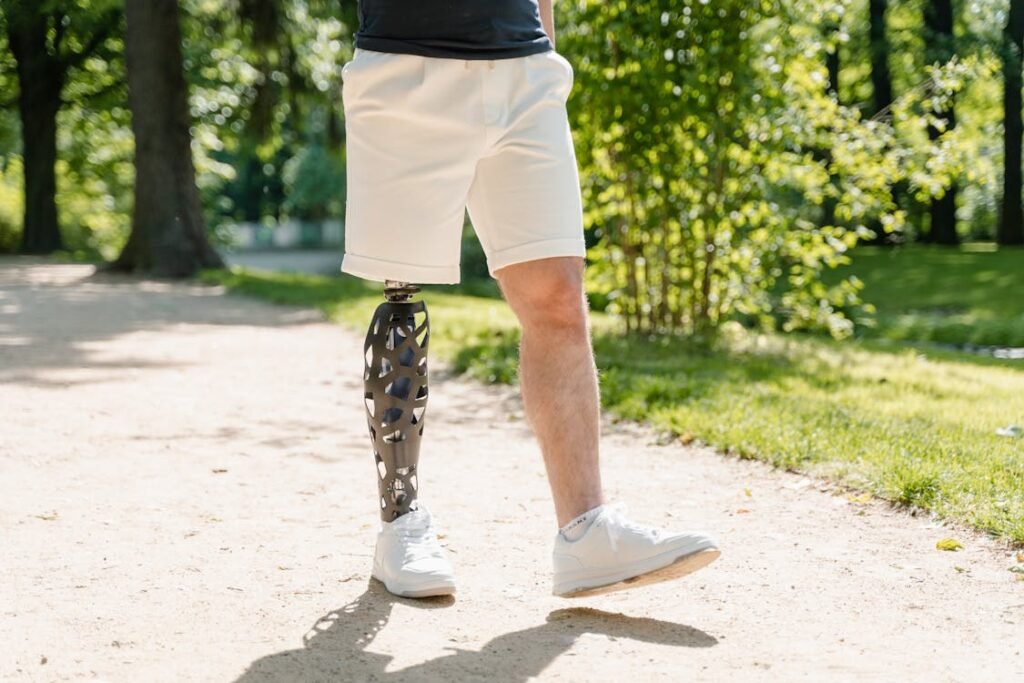
Walking Into a Brighter Tomorrow
More Than Just Walking Again
As we close this heartfelt journey of real-life gait training success stories, one truth stands clear—gait training is not just about the mechanics of walking. It’s about rising after the fall. It’s about rediscovering what it means to move, not just physically, but emotionally and spiritually. The steps our patients take represent more than distance—they represent determination, dignity, and deep inner change.
From the first uncertain step with trembling hands on parallel bars, to walking into workplaces, homes, and public spaces with renewed pride, every story is a testament to the strength of the human spirit. It’s not the prosthetic that gives someone their life back—it’s their courage, their will to try again, and their refusal to give up.
At Robobionics, we don’t see our patients as cases or numbers. We see them as people with stories, struggles, and incredible potential. Our role is simply to walk beside them for a while—offering guidance, support, and the tools they need to build a life they love.
Inspiring the Next Step
If you are someone who’s just beginning your journey with a prosthetic limb—maybe you’ve just received one or are preparing for rehabilitation—this article is for you. We want you to know that you’re not alone. That it’s okay to be afraid. That it’s okay to feel unsure.
But we also want you to know this: it gets better.
The people you’ve read about here didn’t have it easy. They had moments of doubt, discomfort, and even despair. But they kept going. They reached out for help. They trusted the process. And now, they walk not just with ease, but with purpose.
You can do the same.
Whether your goal is to walk across your home, return to your job, play with your kids, or simply stand tall again—you can get there. One step at a time. One day at a time.
And if you’ve already completed your journey, perhaps this article reminds you of how far you’ve come. Maybe you see your own reflection in these stories. If so, we invite you to share your experience with someone just starting out. Because your words might be the spark that gives them strength.
Our Commitment to Every Step
At Robobionics, we believe recovery doesn’t end with fitting a prosthetic or completing a few training sessions. True recovery is lifelong. It evolves as your needs, environment, and goals evolve. That’s why our support doesn’t stop when you walk out of the clinic. We’re here for every step—long after the last gait session ends.
We’re building a community. A space where people can exchange ideas, offer support, and celebrate progress. A place where every step is honoured and every setback is met with fresh encouragement.
We continue to invest in better technology, more accessible services, and human-first care. Because we know what’s at stake. Behind every prosthetic limb is a dream, a family, a future waiting to be lived fully.
Conclusion
Regaining the ability to walk after limb loss isn’t just a medical milestone—it’s a deeply personal victory. Gait training is about more than movement; it’s about reclaiming independence, restoring confidence, and reigniting purpose.
At Robobionics, we’ve been honored to walk alongside individuals who’ve transformed doubt into determination. From the first shaky steps to confident strides in real life, each journey reminds us that courage, guided support, and belief in oneself can move mountains.
If you’re just beginning, know this—every small step matters. You don’t have to be perfect. You only have to keep going. The road may be long, but the rewards are life-changing.
And if you’ve already walked this path, your story is a beacon for others. Together, we inspire a world where no one is defined by their limitations.
Because when strength meets support, every step becomes a triumph.



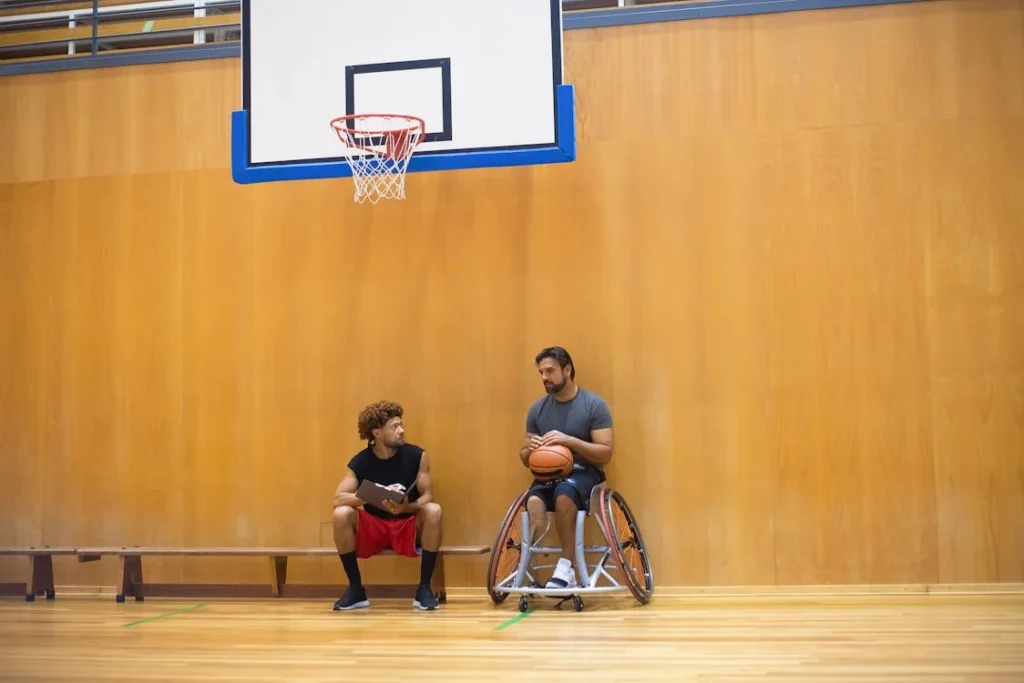
Good Information
Regards, Unissula